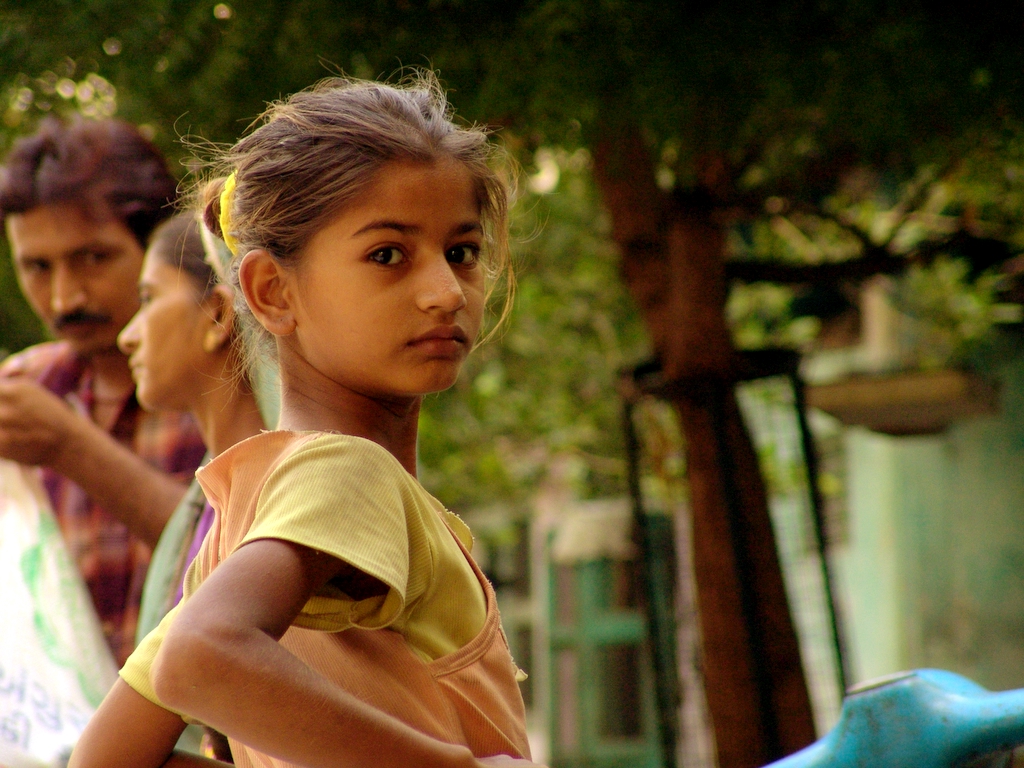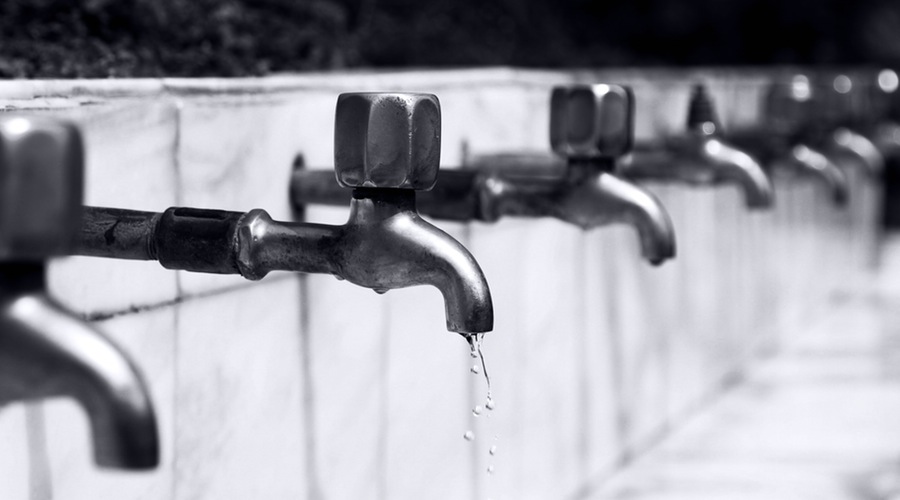
1/3 of Women and Girls Worldwide Don’t Have Toilets: Here’s Why That’s a Feminist and Environmental Issue

This young Indian girl may not have access to a toilet, which can hamper her education and threaten her safety.
By Eleanor Wragg, via News Deeply’s Women & Girls Hub
A lack of access to adequate sanitation affects more than 2 billion people, with women the most affected. One in three women and girls worldwide don’t have a toilet and spend a total of 97 billion hours each year trying to find a place to relieve themselves. When they do find somewhere to go, they are at risk of sexual assault or rape. And even where toilets exist, they may not be adequate for effective and dignified management of menstrual hygiene due to a lack of privacy, light and space. As a result, UNICEF estimates that in Africa alone, one in 10 school-age girls either skip school during their period or drop out entirely. Access to a toilet has a huge impact on women’s health, education and life chances.
Policymakers are waking up to the urgent need to tackle the toilet issue. For example, in India, home to 60 percent of the world’s 1 billion people who relieve themselves in the open air, the government has pledged that all its citizens will have access to a lavatory by 2019.
“Progress is being made in sanitation access for women and girls, particularly in terms of linking sanitation much more strongly with the education sector and the health sector. Exciting developments have been happening and will be strengthened within the Sustainable Development Goals period of implementation, where we’re looking much more at the needs of women and girls when it comes to policy making in water, sanitation and hygiene,” —Lydia Zigomo, WaterAid’s head of region for East Africa.
However, the most affected communities tend to be in either rural or unplanned urban areas without sufficient water or sewerage systems – both prerequisites for the traditional water closet.
“In any policy decision, there is a need to think more seriously about the types of sanitation solutions that work for densely populated settlements. There is a need to embed this into urban planning,” said Zigomo. This is already gaining momentum in many countries, such as Uganda, where the Kampala Capital City Authority is currently mapping out toilet facilities in communities. But policymakers need the right technological solutions for each setting. “What types of sewer systems are appropriate if water itself is not accessible and available 24/7 in some of these communities? Is there a way of using less water or other alternatives to water?” said Zigomo.
A flurry of activity in creating non-traditional alternatives to the toilet is under way, catalyzed in part by the Reinvent the Toilet Challenge, and solutions range from the basic to the mind-blowing.
Take Loowatt, for example. It looks like a traditional toilet, but the company uses a biodegradable film to perform a waterless flush, sealing the waste, which is then stored in a cartridge for periodic emptying. This can be linked to anaerobic digestion systems to provide a source of biogas, turning the lowly lavatory into a value generator. A waste-to-value urban sanitation system with 100 household toilets in Antananarivo, Madagascar, is now being piloted.
Another initiative is the wittily named Crapper composting toilet, which looks a lot like a garden composter. Waste is covered with sawdust or dry leaves, and the user spins the drum once a week to ensure natural aerobic decomposition.
While both of these solutions cut out the need for water, they come at a price: the Crapper costs $625 per unit, higher than India’s annual median per-capita income.
“In general, once a technical solution becomes a product, the issue becomes one of sanitation marketing for sustainable scale-up,” said Taber Hand, the director of Wetlands Work!, which came up with the HandyPod, a solution for floating communities and flood-prone environments. “How do you create a sustainable supply of the product and, most importantly, how do you encourage and succeed in getting very poor households to buy a sanitation system that may cost US$100 or even US$150?”

To attempt to address this problem, his team has developed a suite of complementary marketing strategies that include developing local community loan programs for a household to pay for a HandyPod over 12 or 18 months; providing sanitation systems in the local schools with toilets and WASH education; making local-language videos to describe the system and its benefits for women and children; and training local businesses to provide and install a HandyPod. The scale-up of the HandyPod is currently being trialed in 10 floating villages in Cambodia.
Affordability isn’t the only issue, though. Sanitation systems are only as effective – and durable – as their weakest component, as Caltech engineer Michael Hoffmann and his colleagues found out. The Seva Sustainable Sanitation team created a solar toilet that breaks down water and human waste into fertilizer and hydrogen, which can be stored in fuel cells as energy. Following prototype tests in India and China, “it has become increasingly clear that solutions like ours to the sanitation problem are only going to work if there is an easy plan in place for maintenance,” said Cody Finke, a graduate student in Hoffmann’s lab.
So the team decided to design a self-diagnosing maintenance system for sanitation solutions that could alert designated local operators of a malfunction via cell phone. Because mobile phone use is extremely high throughout much of the developing world, this ensures the local community can look after their own sanitation systems without the need for ongoing external involvement.
But as well as improving women’s access to sanitation by ensuring scale, affordability and durability of the solutions put in place, could toilets create livelihoods for women?
Making sanitation women’s business is the aim of Banka Bioloo, a female-led firm run by Hyderabad-based Namita Banka. It builds and supplies ELOO BioDigester toilets to corporations at a cost of around $500 each, and already counts among its clients Indian Railways and Andhra Pradesh state government on India’s southeastern coast. Other women-focused solutions have includedEcoloove, a cross between a rickshaw and a portable toilet, which provided women with the opportunity to start businesses financed with microloans to rent out toilet visits. Meanwhile, Kenyan initiative Sanergy, which franchises low-cost, hygienic, waterless toilets to entrepreneurs in East Africa’s urban slums, has found that most of its operators are women.
“It’s about more than just the dignity of having access to a toilet. Women can make a living from businesses related to waste management if we think more creatively about sanitation across the entire chain,” said WaterAid’s Zigomo. She pointed to initiatives in East Africa, where women’s groups have made waste into money by using energy from biogas to run cafés. “That’s the kind of thinking we need to see more of in sanitation, where you think beyond just getting rid of the waste, to looking at the potential for various types of businesses to operate, and in that process, women can also benefit.”
This article is reprinted with permission from News Deeply. The original can be read here.



